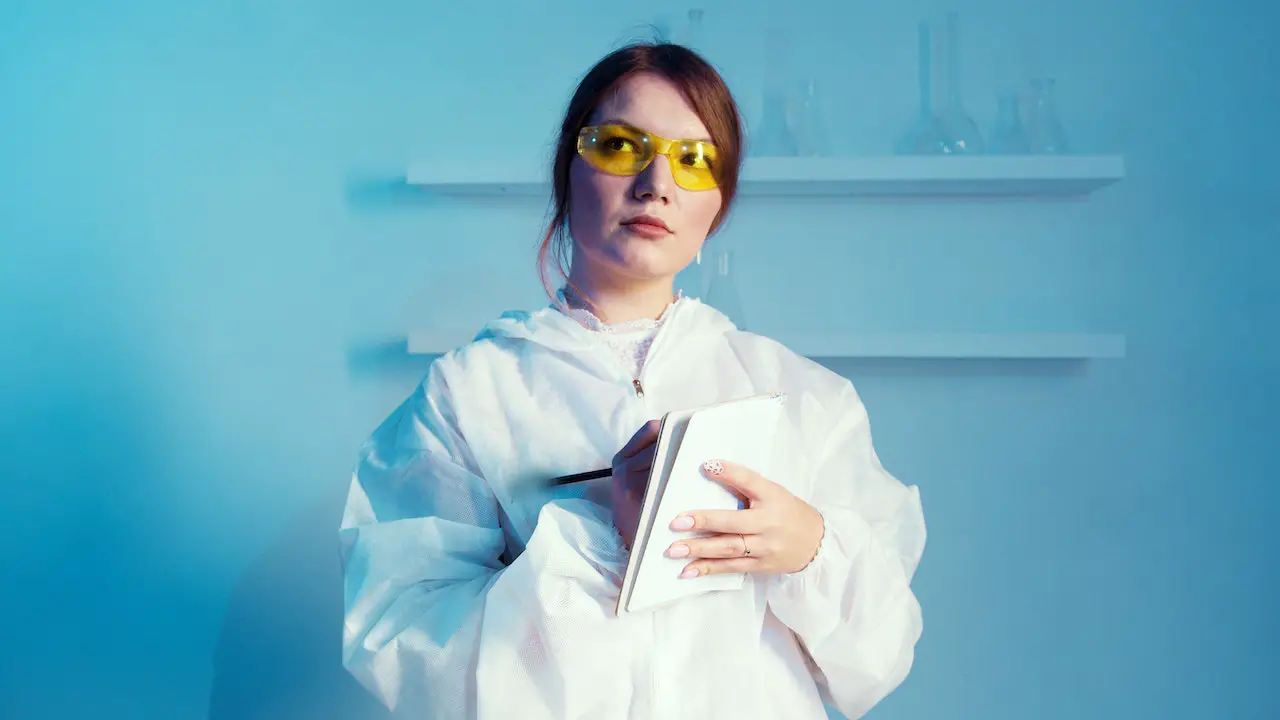Scientific thinking is a crucial aspect of modern-day society, as it enables individuals to approach complex situations and problems systematically and rationally. Central to this skillset is the scientific method, which comprises essential components such as hypothesis formulation, induction, deduction, experimental design, causality, and hypothesis testing. Understanding and implementing this style of reasoning allows for more informed decisions and efficient problem-solving across numerous fields, from everyday life to academia and industry.
The development of scientific thinking involves the ability to identify patterns, consider alternative explanations, and collect evidence to support or refute proposed hypotheses. As individuals grow, their capacity to perceive causal relationships and initiate inductive reasoning expands, allowing them to recognize links between observations and underlying mechanisms. This cognitive progress is further enhanced through group collaboration, fostering a more comprehensive consideration of diverse perspectives and potential solutions.
Incorporating scientific thinking into one’s daily life and endeavors has far-reaching implications beyond the realm of science. The critical thinking skills and logic that stem from engaging with the scientific method can be applied to a variety of situations, ultimately empowering individuals to make well-reasoned choices and better understand the world around them.
Fundamentals of Scientific Thinking
Scientific thinking is a crucial aspect of understanding the world around us. It refers to the thought process and reasoning involved in the field of science, encompassing various techniques such as observation, induction, deduction, and experimental design1. It enables us to draw conclusions based on evidence, helping us develop our knowledge and understanding of various phenomena. In this section, we will discuss the fundamental elements of scientific thinking that are essential for success in any scientific pursuit.
Observation is the first step in scientific thinking. It involves using our senses and tools, such as microscopes or telescopes, to gather information about the surrounding world. Observations can be qualitative, describing the qualities of a phenomenon, or quantitative, measuring specific aspects of a phenomenon. Accurate and unbiased observations form the basis of scientific inquiry, as they provide data that can be used to generate hypotheses and inform further experimentation2.
Knowledge plays a significant role in scientific thinking. Both pre-existing knowledge and newly acquired knowledge through observations and experiments contribute to the development of new scientific theories and understanding. Scientists must have a solid foundation in their respective fields to accurately interpret observations and design meaningful experiments. The growth of scientific knowledge is an ongoing process, with scientists continuously building upon the work of others and refining theories as new information becomes available1.
The scientific method is at the heart of scientific thinking. This systematic approach involves several key steps:
- Observing a phenomenon of interest and developing a research question.
- Formulating a hypothesis based on observations and existing knowledge.
- Designing and conducting controlled experiments to test the hypothesis.
- Analyzing data and drawing conclusions from the experimental results.
- Using the conclusions to refine the hypothesis or develop new hypotheses and repeating the process3.
By following the scientific method, scientists can minimize biases, control variables, and ensure the validity and reliability of their findings. This process also promotes critical thinking and problem-solving skills, allowing scientists to continuously refine their understanding of the world.
In conclusion, scientific thinking is a valuable tool for understanding the natural world and advancing human knowledge. The fundamentals of scientific thinking, including observation, knowledge, and the scientific method, are essential to the successful pursuit of any scientific endeavor. By employing these principles, scientists are better equipped to draw accurate conclusions, develop new theories, and make significant contributions to their fields.
Hypothesis Formation
One of the essential elements of scientific thinking involves the process of forming a hypothesis. A hypothesis is a testable and falsifiable statement that aims to explain the relationship between variables, based on certain assumptions. It serves as the foundation of a scientific investigation, guiding researchers to make predictions and design experiments.
Inductive Reasoning
Francis Bacon and René Descartes greatly influenced the development of the scientific method by emphasizing the importance of inductive reasoning. Inductive reasoning involves drawing general conclusions from specific observations. In the context of hypothesis formation, researchers use inductive reasoning to identify patterns and relationships between variables from gathered data and propose a hypothesis based on those observations.
A testable hypothesis enables scientists to design experiments or observations that can either support or refute the statement. It is crucial to clearly define the variables involved in the hypothesis and specify the conditions under which the hypothesis would hold true. This ensures a clear and accurate assessment of its validity.
For a hypothesis to be considered falsifiable, it must be possible to conceive a scenario where the prediction is proven incorrect. This quality allows scientists to objectively evaluate the hypothesis and discard it when evidence contradicts it, ensuring the progression of scientific knowledge.
When forming a hypothesis, scientists often make certain assumptions. These assumptions can be based on accepted theories, previous research findings, or common-sense logic. Assumptions help simplify complex phenomena and establish a basis for further investigation. However, it is essential to critically assess these assumptions as they may introduce bias or errors into the research process.
In conclusion, hypothesis formation is a critical aspect of scientific thinking, as it establishes the foundation for scientific inquiry. By utilizing inductive reasoning to develop testable and falsifiable hypotheses, researchers bring clarity and objectivity to their investigations, enabling the scientific community to continually expand its understanding of the world around us.
Experimental Process
Controlled Experiments
A key aspect of the scientific method is the controlled experiment. In this type of experiment, researchers create a controlled environment, usually within a lab, where they can manipulate variables and observe their effects. The primary goal is to achieve reliable results by eliminating external factors that may influence the outcome.
Controlled experiments involve two groups: the experimental group and the control group. The experimental group receives the treatment or manipulation, while the control group remains unaltered. By comparing the results of both groups, scientists can determine if the change in the experimental group is due to the variable being tested or other uncontrolled factors.
To ensure consistency in their results, researchers also need to choose a suitable sample size. This allows them to make inferences about a larger population based on their findings. Moreover, controlled experiments are often replicated by other scientists to confirm the validity of the conclusions.
Field Research
On the other hand, field research involves collecting data outside the controlled environment of a lab. Field research is particularly valuable in areas where natural settings play a critical role in understanding the phenomena under investigation (e.g., ecology, anthropology, geology).
There are various methods of field research, including:
- Direct observations: Researchers observe the subject in its natural environment without interfering.
- Surveys and questionnaires: These tools allow researchers to collect data from a large group of participants.
- Interviews: In-depth discussions with individuals help researchers gather more detailed information.
Although field research lacks the controlled setting of laboratory experiments, it offers a more naturalistic perspective on the subject under investigation. This approach enables researchers to study complex interactions and real-world events that are not easily replicated in the controlled environment of a lab.
Both controlled experiments and field research are essential components of the experimental process in the scientific method. Each has its strengths and limitations, but both contribute to the overall understanding and advancement of scientific knowledge. In many cases, a combination of these methods is used to validate and expand on the findings of a single study.
Collecting and Analyzing Data
Collecting and analyzing data are essential components of scientific thinking. These processes involve gathering empirical data through observations and experiments, then examining the information to establish patterns, relationships, and insights.
The first step in data collection is to define the objectives of your research clearly. This helps ensure you’re focusing on the correct variables, directing your efforts towards obtaining relevant data. It’s crucial to employ appropriate techniques and use reliable tools to gather accurate and comprehensive data. This encompasses both quantitative (numerical) and qualitative (non-numerical) data that contribute to answering your research question.
Various methods can be employed to collect data, such as surveys, interviews, and experiments. It’s essential to choose the method that suits your research question and target population best. Furthermore, proper planning and attention to detail during this phase ensure that the resulting data is reliable and valid.
Once the data is collected, the next step is to analyze and interpret the information. This involves organizing, processing, and exploring the data set to identify patterns, relationships, and trends. Different approaches to data analysis include descriptive (summarizing the data), exploratory (searching for relationships), predictive (forecasting outcomes), and inferential (generalizing findings to a larger population).
To ensure accurate and meaningful results, it is crucial to employ appropriate statistical methods and software during the analysis phase. Additionally, data visualization techniques, such as plots, charts, and graphs, can prove beneficial in understanding and communicating findings effectively.
Incorporating the principles of scientific thinking and maintaining a confident, knowledgeable, neutral, and clear tone when discussing data collection and analysis ensures robust, reliable, and valid findings. By accurately gathering and interpreting empirical data, observations, and information, researchers can draw meaningful conclusions that contribute to the development and understanding of various fields and disciplines.
Making Predictions and Testing Hypotheses
One of the essential elements of scientific thinking is the ability to make predictions and test hypotheses. This process is crucial for advancing our understanding of the natural world and solving problems in various fields. In this section, we will discuss the importance of predictions, the formulation of hypotheses, and the significance of experimentation in scientific thinking.
Predictions play a vital role in science as they help guide the experimental process. Scientists start by making an observation and formulating a question to investigate the observed phenomenon. They then propose a hypothesis, which is a testable explanation for the observation. The hypothesis should be falsifiable and testable, as reflected in an “If…then” statement summarizing the idea1. Based on their hypotheses, scientists make predictions about the outcomes of experiments or future observations.
Experimentation is the backbone of the scientific process. It allows scientists to test their predictions and gather empirical evidence to support or refute their hypotheses2. During an experiment, researchers carefully control variables and record data to ensure accurate results. This often involves repetition to verify the findings and eliminate random errors or biases.
It is essential to acknowledge that scientific thinking is an iterative process. The outcomes of experiments can either support a hypothesis, leading to the development of a theory or model, or disprove it, sending scientists back to the drawing board3. This cycle helps refine our understanding and contributes to the growth of scientific knowledge. Ultimately, this process allows us to make increasingly accurate predictions about the world around us.
In conclusion, the ability to make predictions and test hypotheses through experimentation drives scientific progress. By formulating testable explanations, making predictions, and conducting experiments, we enhance our understanding of the natural world and improve our problem-solving capabilities.
Drawing Conclusions and Forming Theories
Drawing conclusions is an essential step in scientific thinking. After conducting experiments, analyzing data, and interpreting results, researchers aim to make informed statements about their findings. These conclusions are supported by empirical evidence, and they often contribute to the development, modification, or refutation of existing theories.
One crucial aspect of scientific conclusions is that they should not be taken as absolute truths. Since every scientific investigation has limitations, the results obtained are not definitive proof of a theory but rather evidence that supports or contradicts it. Researchers must remain cautious in making claims, taking into account the fact that all scientific knowledge is open to further scrutiny and revision.
The formation and evolution of scientific theories are closely related to the process of drawing conclusions. Theories are explanatory models that attempt to account for observed patterns or relationships in the world. They are tested through various studies, and as more evidence accumulates, they may be revised, refined, or replaced by alternative explanations.
It is important to note that scientific theories are not mere guesses or speculations. They are well-substantiated explanations that have demonstrated their reliability and predictive power through rigorous testing. An essential characteristic of scientific theories is their falsifiability, meaning that they can be potentially disproven or modified based on new evidence.
In summary, drawing conclusions and forming theories are critical aspects of scientific thinking. Researchers must be careful not to overstate their findings, recognizing that our understanding of the world is continuously evolving. As our body of knowledge grows and evidence accumulates, theories are developed, revised, or replaced, leading to a deeper and more accurate understanding of the world around us.
Role of Cognitive Biases and Points of View
Cognitive biases are systematic errors in human thinking and decision-making processes, which often do not comply with logic, probability reasoning, or plausibility. They play a significant role in how we process and interpret information, potentially leading to distorted perspectives and misconceptions. Understanding the influence of cognitive biases and points of view is crucial in scientific thinking, as it helps us to analyze information more critically and objectively.
For instance, the confirmation bias is a common cognitive bias where people tend to favor information that reinforces their existing beliefs. This may lead to a selective collection of data, ignoring evidence that contradicts one’s views. In scientific thinking, it is essential to be aware of this bias as it helps to reevaluate our beliefs and assumptions, ensuring that they are grounded in facts.
Another notable cognitive bias is the availability heuristic, which involves people basing their decisions on readily available information rather than considering all relevant data. Scientists should be mindful of such biases, as they might overlook crucial evidence due to its obscurity. Adopting an open-minded approach and considering all available data is a key component of scientific thinking.
Points of view also play a critical role in scientific thinking. Different scientists may have distinct perspectives on a problem, leading to diverse methodologies and interpretations of results. This diversity of perspectives can contribute to a more comprehensive understanding of a phenomenon, increasing the robustness of scientific conclusions. However, it is also essential to examine these diverse viewpoints critically and objectively, considering the strengths and limitations of each argument.
In sum, being aware of cognitive biases and diverse points of view contributes greatly to scientific thinking. By acknowledging these elements, researchers can adopt a more objective and critical approach, ultimately leading to more accurate and reliable scientific conclusions.
Purpose and Importance of Scientific Thinking
Scientific thinking is a crucial element in the pursuit of knowledge and understanding. Its core purpose is to develop a comprehensive understanding of the natural world and its phenomena through systematic observation, experimentation, and reasoning. With the help of induction, deduction, experimental design, and hypothesis testing, scientific thinking enables individuals to critically assess and interpret information, which can lead to new discoveries and theories.
The importance of scientific thinking cannot be overstated, as it serves as a foundation for scientific inquiry and innovation. By incorporating this skill set into our daily lives, we can foster a better understanding of the world around us and make informed decisions based on empirical evidence. Scientific thinking promotes clarity, precision, and logic, which are essential traits for effective problem-solving and decision-making in various fields, including business, medicine, and engineering.
One of the primary purposes of scientific thinking is to raise vital questions and challenges rooted in curiosity, ultimately expanding our knowledge base and worldview. This approach to thought encourages individuals to gather and assess relevant scientific data, using abstract ideas to interpret them effectively. As a result, scientific thinking fosters an environment of continuous learning and intellectual growth.
In essence, scientific thinking is more than just an approach to learning; it is a mindset that promotes a deep understanding of the world and its processes. Through critical analysis and systematic reasoning, individuals who engage in scientific thinking can draw meaningful conclusions from the available evidence, shaping our collective understanding of the universe. Furthermore, the skills cultivated through scientific thinking make it an indispensable aspect of personal and professional development, enhancing our ability to navigate the complexities of the modern world.
Adopting a confident, knowledgeable, neutral, and clear tone of voice, scientific thinking significantly contributes to the pursuit of knowledge and understanding. In an increasingly complex and interconnected world, harnessing the power of scientific thinking becomes ever more essential for progress, innovation, and unlocking the true potential of human ingenuity.
Frequently Asked Questions
What are the key components of scientific thinking?
Scientific thinking involves a set of cognitive skills and processes that enable individuals to reason, make decisions, and solve problems based on empirical evidence and logical reasoning. Some essential components of scientific thinking include induction, deduction, experimental design, causal reasoning, concept formation, and hypothesis testing.
How do scientific thinking skills impact research?
Developing skills in scientific thinking directly impacts research quality by providing a comprehensive framework for analyzing data, generating hypotheses, and designing experiments. These skills allow researchers to critically evaluate their methods and results, ensuring that conclusions are based on valid and reliable evidence. Ultimately, this rigorous approach helps advance our understanding of the world by contributing to the development of new theories and solutions.
What are the main types of scientific thinking?
There are several types of scientific thinking that can be broadly categorized as: inductive reasoning, where generalizations are drawn from specific observations; deductive reasoning, where specific predictions are made based on general principles; abductive reasoning, where explanations are hypothesized for observed phenomena; and causal reasoning, which involves determining the cause-and-effect relationships between variables.
How can examples of scientific thinking be applied in everyday life?
Scientific thinking can be applied in various aspects of daily life, such as problem-solving, decision-making, and critical analysis. For instance, when troubleshooting a malfunctioning device, one could use the hypothetico-deductive method by formulating hypotheses and systematically testing them. Similarly, when deciding on a course of action, one could weigh the available evidence and assess the pros and cons of alternative options.
What is the role of scientific thinking in problem-solving?
Scientific thinking plays a crucial role in problem-solving by providing a systematic approach to gathering and evaluating evidence, formulating hypotheses, and deducing logical conclusions. This method permits individuals to break down complex problems into manageable components, identify potential solutions, and rigorously test the effectiveness of those solutions. Encouraging the use of scientific thinking in problem-solving also fosters critical thinking, collaboration, and creativity.
Which books and resources can help improve scientific thinking skills?
Several books and resources can help individuals develop and enhance their scientific thinking skills. Some recommendations include “The Structure of Scientific Revolutions” by Thomas Kuhn, “Thinking, Fast and Slow” by Daniel Kahneman, “The Demon-Haunted World: Science as a Candle in the Dark” by Carl Sagan, and online courses such as Science Buddies’ Steps of the Scientific Method. By exploring these resources, individuals can gain a more comprehensive understanding of the principles and techniques that underpin scientific thinking.





